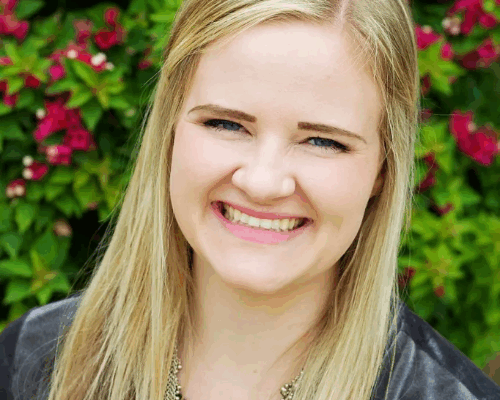
By Devan Jensen
In editing, as in most activities, haste makes waste. The careful editor does not merely plunge into the text and flood it with corrections but instead pauses long enough to decide the quickest and easiest solution to a problem. By analyzing a problem clearly before touching pen to paper, the careful editor ultimately gets through the project faster than the person who plows blindly ahead, cutting a sentence before reading the paragraph and realizing that the sentence is necessary. In short, every correction should have a reason, and the blunderer is never as efficient as the careful editor (adapted from Grant Milnor Hyde, Newspaper Editing: A Manual for Editors, 79).
Editing is both an art and a science. The science part involves technical rules—grammar, punctuation, and so forth. As editors, we refer often to the RSC Style Guide, Church Style Guide, and Chicago Manual of Style. We have the self-discipline to go the extra mile, checking facts and figures in books and reputable Internet sites.
But editing is an art too. It takes a careful eye and a discerning mind to decide how much to change, taking into account the reading audience, the publication’s purpose, and the author’s personality.
Our authors are our customers. Let’s treat their manuscripts with respect. As editors, our goal is to revise for clarity if necessary but not to distort the main message. I have found it best to use a light touch when possible. To put it in environmental terms, tread lightly and leave a small footprint. This approach prevents introducing errors while rewriting the text and keeps authors happy (after all, the words are theirs, and their names appear at the top).
Sometimes a manuscript needs major help. If so, talk to me; then we’ll either have the author revise it or we will propose cuts in pencil.
Size up a manuscript the way a barber approaches a haircut. First, ask whether to give a light, medium, or heavy cut. Skim through the document, paying particular attention to subheads (which guide readers through the article); then begin “snipping” here and there, focusing on grammar, style, and usage while absorbing the message of the piece. Take into account the author’s expertise of language and documentation. And make sure to read the whole thing again to catch glaring problems.
Editing takes good taste and judgment. You can groom these traits, but it takes time, experience, and a ton of reading. In fact, reading widely will help you appreciate language nuances and spot tools of effective communication (bullet points, subheads, effective design, tight prose, and so on). The more you read, the more tricks you have up your sleeve. And reading leads you to question unusual spellings or factual claims that just don’t feel right. Trust those hunches. When in doubt, look it up. In the words of Obi-Wan Kenobi, “Trust your feelings.”
Your confidence as an editor will grow as you gain experience. And experience comes as you work through problems, often asking advice from your fellow editors and sometimes rethinking options to find the best solution for that unique situation.
Respect the author. Be the manuscript.
Table 1. Levels of Copyediting (Adapted from Amy Einsohn, The Copyeditor’s Handbook, 12)
Light |
Medium |
Heavy |
|
Clarity |
Fix small patches (up to several words) of ineffective prose when doing so does not impair meaning, is not needlessly nitpicky, and is fairly transparent. Otherwise, query author.
Point out (do not revise) large patches (sentence or more) of ineffective prose. Request clarification of terms likely to be unfa-miliar to target audience. Preserve author’s voice. |
Fix small patches of ineffective prose.
Use judgment in deciding whether to fix or query larger ineffective patches. Supply proposed revisions when possible. Supply transitions, sub-heads, other “road signs.” Request or supply definitions of unfamiliar terms. Query major organizational or content problems. Preserve author’s voice. |
Rewrite any ineffective patch regardless of length if competent to do so.
Supply “road signs.” Define unfamiliar terms. Reorganize elements for optimal comprehensibility. Use initiative, best judgment in solving problems. Caution: Obtain supervisor and author approval before overhauling (undertaking extensive deleting, rewriting, restructuring). |
Correctness
|
Correct indisputable errors in grammar, usage, and diction.
Fix mechanical errors. Use judgment in deciding whether to fix, ignore, or query any locution that is not an outright error. Query facts and statements that seem incorrect. |
Correct all language and mechanical errors.
Verify facts and dubious statements using online or desktop sources. Fix clear factual errors; otherwise query, proposing well-considered revisions when possible. |
!Correct all language and mechanical errors.
Show due diligence in verifying facts and dubious statements and in revising for accuracy. Note: Any revisions that may affect the argument should be brought to the author’s attention. |
Consistency |
Ensure consistency in all mechanical (e.g., spelling, capitalization, punctuation, hyphenation, abbreviations, numbers, quotations, lists, notes) and house-style matters. | ||
Completeness |
Ensure that all parts of the document are in place (cross-check and double-check everything). Refer to proofreading checklist for detailed guidance. | ||
Directions: Refer to the table to edit the paragraphs as indicated.
Perform a light edit.
“Murphy’s law” insures us that no amount of proof-reading will uncover all of the errors in a work about to be published. The question we might well ask is as follows. “Just how many re-readings are reasonable”? In my personal experience I have found that two readings of galleys and two of page proofs will catch ninety nine percent of the errors. Unfortunately the remaining one per cent is often the mistakes that not only cause embarrasment, but trouble. For example, the wrong numbers for ordering merchandise or mispelled names.
Perform a medium edit.
“Murphy’s law” insures us that no amount of proof-reading will uncover all of the errors in a work about to be published. The question we might well ask is as follows. “Just how many re-readings are reasonable”? In my personal experience I have found that two readings of galleys and two of page proofs will catch ninety nine percent of the errors. Unfortunately the remaining one per cent is often the mistakes that not only cause embarrasment, but trouble. For example, the wrong numbers for ordering merchandise or mispelled names.
Perform a heavy edit.
“Murphy’s law” insures us that no amount of proof-reading will uncover all of the errors in a work about to be published. The question we might well ask is as follows. “Just how many re-readings are reasonable”? In my personal experience I have found that two readings of galleys and two of page proofs will catch ninety nine percent of the errors. Unfortunately the remaining one per cent is often the mistakes that not only cause embarrasment, but trouble. For example, the wrong numbers for ordering merchandise or mispelled names.
This exercise is adapted from Amy Einsohn, The Copyeditor’s Handbook (2000), 23.
Levels of Editing Exercise 1—Key
Light Edit
Murphy’s Law assures us that no amount of proofreading will uncover all the errors in a work about to be published. The question we might well ask is, Just how many rereadings are reasonable? In my personal experience, I have found that two readings of galleys and two of page proofs will catch 99 percent of the errors. Unfortunately, the remaining 1 percent are often the mistakes that cause not only embarrassment but trouble—for example, misspelled names or the wrong numbers for ordering merchandise. [au: Replace with “incorrect catalog numbers” for improved clarity?]
Medium Edit
No amount of proofreading will uncover all the errors in a set of proofs. The question is, [how many rereadings are reasonable]? [author: Replace bracketed text with “how much proofreading is reasonable” for directness?] I have found that two readings of galleys and two readings of page proofs will catch 99 percent of the errors. Unfortunately, the remaining mistakes are ones that can cause not only embarrassment but trouble—for example, misspelled names or incorrect catalog numbers.
Heavy Edit
No amount of proofreading will uncover all the errors in a set of proofs. Two readings of galleys and two readings of page proofs will usually catch 99 percent of the errors, but the remaining mistakes—such as incorrect phone numbers or misspelled names—often cause both embarrassment and trouble.
Photo by Jeremy Bishop on Unsplash.




A very helpful reminder of some high-level editing principles. Thank you!